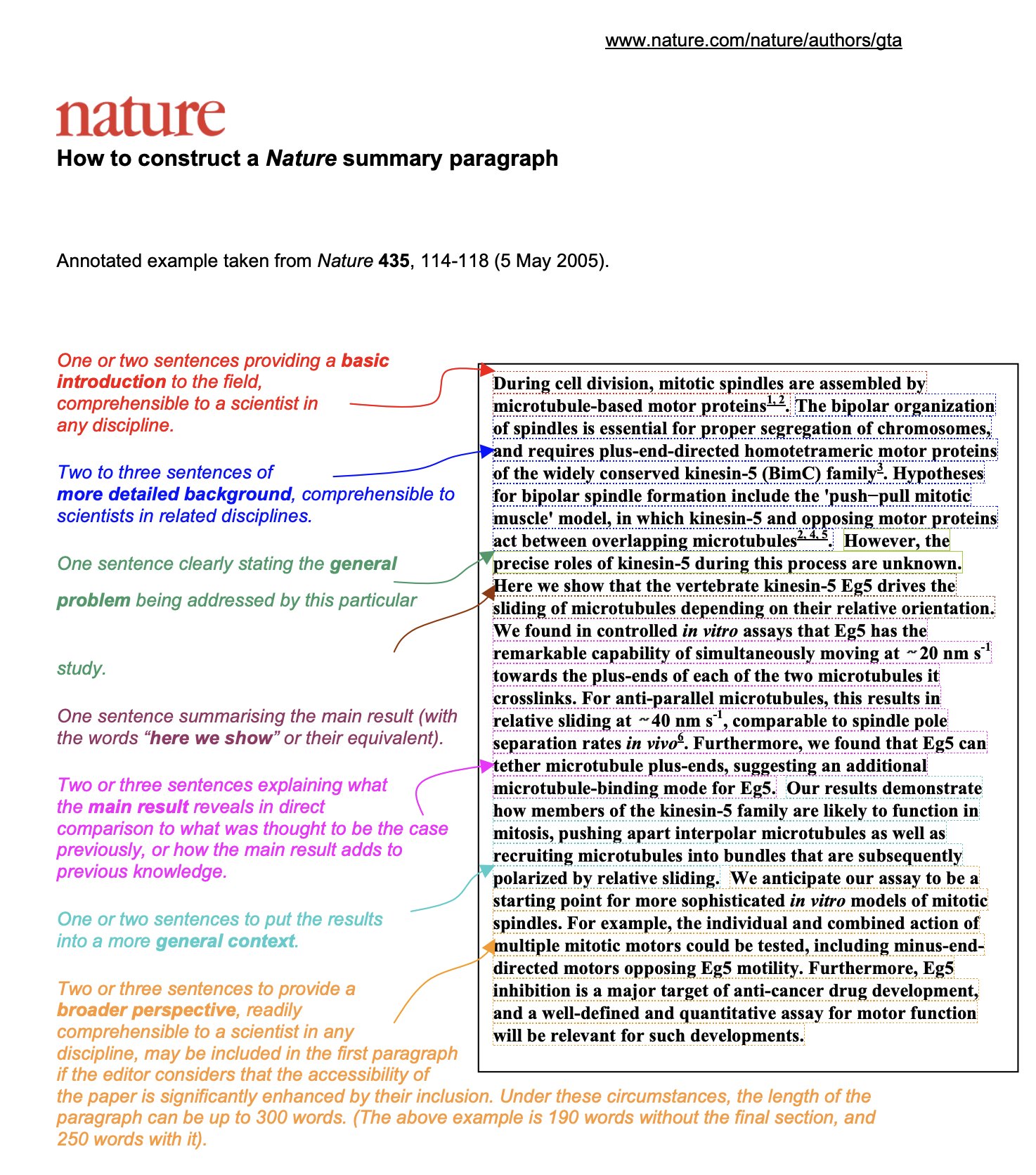abstract and title
4.2 abstract

-
Structure One paragraph Use about 200 - 500 words (ideally no more than 400 words)
- 1-2 sentences: Introduction: Describe the topic, the motivation, and overall purpose of the research (Why is this research interesting and important? What gap in our knowledge does it fill?)
- 1-2 sentences: Objective: Specific research objective, and potentially hypotheses/predictions, if any.
- 1-2 sentences: Methods: Very concise overview of the methods used to address the research questions.
- 2-3 sentences: Results/Discussion: Describe the major results (what you found) and interpretation of the results (what the results mean).
- 1-2 sentences: Conclusions: Synthesizes the major contributions of the study into the context of the larger field to which the study belongs. What did we learn about the bigger picture of this field in general from doing this study?
-
Function: an abstract proves a short summary of the entire study. The abstract should include the motivation or reason for conducting the study, what the research question or hypothesis was, how the experiments were conducted, what the results were, how the results are interpreted in light of the research question or hypothesis, and a concluding sentence about the general contribution or importance of the study. A good abstract should:
- Inform readers about the article’s content
- Summarize complex information in a clear, concise manner
- Help readers decide whether or not to read the article
- Used in conferences to summarize what the speaker will say during his/her presentation
4.3 title
-
Structure One sentence Use about 75-140 characters (ideally no more than 125 characters). There are essentially two types of titles: descriptive titles and mechanistic titles.
- If your manuscript is exploratory research, consider using a descriptive title. For example:
- “Comparative analysis of carbon, sulfur, and phoshorous chemistry in six Alaskan lakes.”
- If your manuscript is hypothesis-driven research, consider using a mechanistic title. For example:
- “Dissolved organic carbon in Alaskan lakes is heavily influenced by water pH and temperature.”
- If your manuscript is exploratory research, consider using a descriptive title. For example:
-
Function: a title captures attention and highlight the research question(s). A good title should:
- Be indicative of the content of the paper
- Attract the interest of potential readers
- Reflect whether the article is deascriptive or mechanistic
- Include important keywords
further reading
[Abstract Guide] (https://www.cbs.umn.edu/sites/default/files/public/downloads/Annotated_Nature_abstract.pdf)